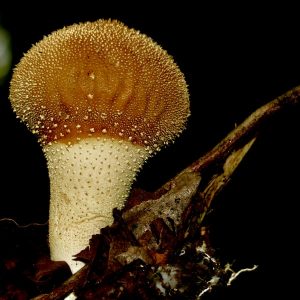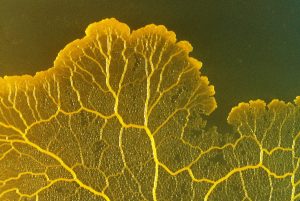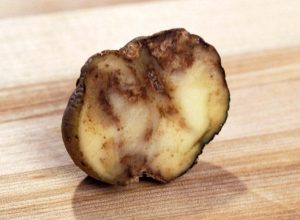Economic Importance of fungi
Fungi can both be useful and harmful. They play an important role in various aspects. It will be discussed accordingly.

Fungi as Decomposer
- Fungi are major decomposers in many ecosystems
- It helps to release nitrogen and phosphorus from dead and decaying matter.
- Homobasidiomycetes is a major saprotroph involved in the decomposition of the two most abundant organic carbon sources, cellulose and lignin, thereby releasing nutrients up in wood and leaf litter
- Fungi help in the decomposition of organic matter which increases the fertility of the soil.
- Some species of fungi can decompose structural polymers such as cellulose, hemicellulose, lipid, protein, starch, etc.
Fungi in fermentation
- The ascomycetes species are majorly involved in alcoholic fermentation mostly by yeasts.
- These are used in the wine and brewing industries.
- P. camemberti and Aspergillus is used in the fermentation of soybeans and wheat
- Yeasts and bacteria are used to produce soy sauce.
- There are known to be two different types of fermentation and the difference is due to the strains of yeast used. In bottom-fermenting beers, the yeast settles as sludge at the bottom of the brewing vessel, whereas it floats at the top in top-fermenting beers at the end of the fermentation process.
- Wine is the fermentation product of monosaccharides which are typically fruit juices and especially the must of grapes. The must of grapes is either fermented directly, relying on the natural yeast flora of the grapes or a pure yeast starter culture is added at a high concentration so that it can suppress the wild yeasts.
- Sake production involves the conversion of rice starch into monosaccharides involving yeast which are then fermented into ethanol.

Fungi in Food Products
- Mushrooms and truffles are used as food due to their high protein content.
- Ascomycetes are used in food production like in bread-making by yeast, cheese ripening by Penicillium roqueforti.
- Cheese production involves numerous different yeast species. P. roqueforti for blue-veined cheeses and P. camemberti for white mold cheeses are specialized penicillium species used for cheese fermentation.
- Ascocarps like morels are used for food flavorings.
- Yeast metabolites like ethanol impart flavor to the beer which are esters of higher alcohols (e.g. isobutanol), diketones, diacetyl, isobutyraldehyde, and methylglyoxal.

Fungi in Medicines
- The major drugs which are produced by fungi involve Penicillium notatum, Claviceps purpurea, Saccharomyces cerevisiae, Aspergillus proliferous, etc
- Penicillin, the major antibiotic is obtained from Penicillium chrysogenum and cephalosporin is from Acremonium spp, and organic acids such as citric acid are from Aspergillus niger.
- The immunosuppressant drug cyclosporin is a metabolite of Tolypocladium inflatum.
- Trichocomaceae secondary metabolite, griseofulvin is used as a systemic antifungal drug, especially against dermatophytes
- Many fungi like Aspergillus niger have the ability to synthesize steroids like cortisone from plant glycosides by fermentation.
Fungi in Antibiotics
- Pythium species are important primary colonizers and they are intolerant to antibiotics.
- Rumen Fungi are anaerobic fungi that are used for the early colonization of ingested herbage.
Fungi as Plant Nutrition
- Rhizoctonia, Tricholoma, Boletus, Phallus, Amanita, etc. associated with the roots of higher plants form a mycorrhizal relationship.
Fungi as Nutrient supplements
- Thraustochytrium and Schizochytrium are recently known to be the producers of polyunsaturated fatty acids (PUFAs) which are vital nutrient supplements, and thraustochytrid oils can be an alternative source to fish oil.
Fungi as Enzymes production
- Aspergillus and Penicillium species have the ability to produce large quantities of extracellular enzymes. This feature made them useful for industrial purposes for the production of almost all commercial fungal enzymes.
- Proteases, amylases, lipases, and pectinases which are so produced used in the manufacturing of dairy, bakery, distillery and brewery products, juices and leather, and in the starch industry
Fungi in Hormone production
- Some fungi like Gibberella fujikuroi are used to produce plant hormone-like Gibberellin.
Fungi as research
- Fungi are used in research in biological processes like Red bread mold Neurospora used for the study of laws of inheritance, genetic makeup.
- The slime molds are also used for research purposes.

Fungi in Vitamins
- The yeasts serve as a source of the vitamin B complex.
- Riboflavin is known to be obtained from a filamentous yeast, Ashby gossypii.
Fungi as pathogens
- Oomycota is known to cause plant diseases like Irish potato famine caused by Phytophthora infestans and downy mildew of grapes caused by Plasmopara viticola.
- The late blight of potato which is caused by P. infestans is a notorious disease.
- P. infestans causes significant worldwide crop losses of tomato

Fungi in Food spoilage
- Food spoilage results due to ascomycete contamination. For ex- contamination of cereal grains and grass by sclerotia of the ergot fungus Claviceps purpurea.
- Yeast and molds are responsible for the spoilage of food.

Fungi as toxins
- Fungi can produce a toxic secondary metabolite called mycotoxins- These are toxic fungal products that are naturally produced when certain molds or fungi grow in human and animal foods. Few fungal toxins are Trichothecenes, Zearalenone, Fumonisins, Ochratoxins, Aflatoxins, and Deoxynivalenol.
Fungi in damaging Products
- Fungi are seen to grow on wet clothes and shoes damaging them. Mold like Aspergillus niger mostly produces enzymes that break down cellulose or protein and use them as food.
- Ascomycota phylum are responsible for deteriorating paper-based collections

Fungi as a source of insecticides
- Fungi can be used for the elimination of diseases like malaria.
- They attack a number of insects that are harmful to crops.
May Read: Classification of Fungi
References
